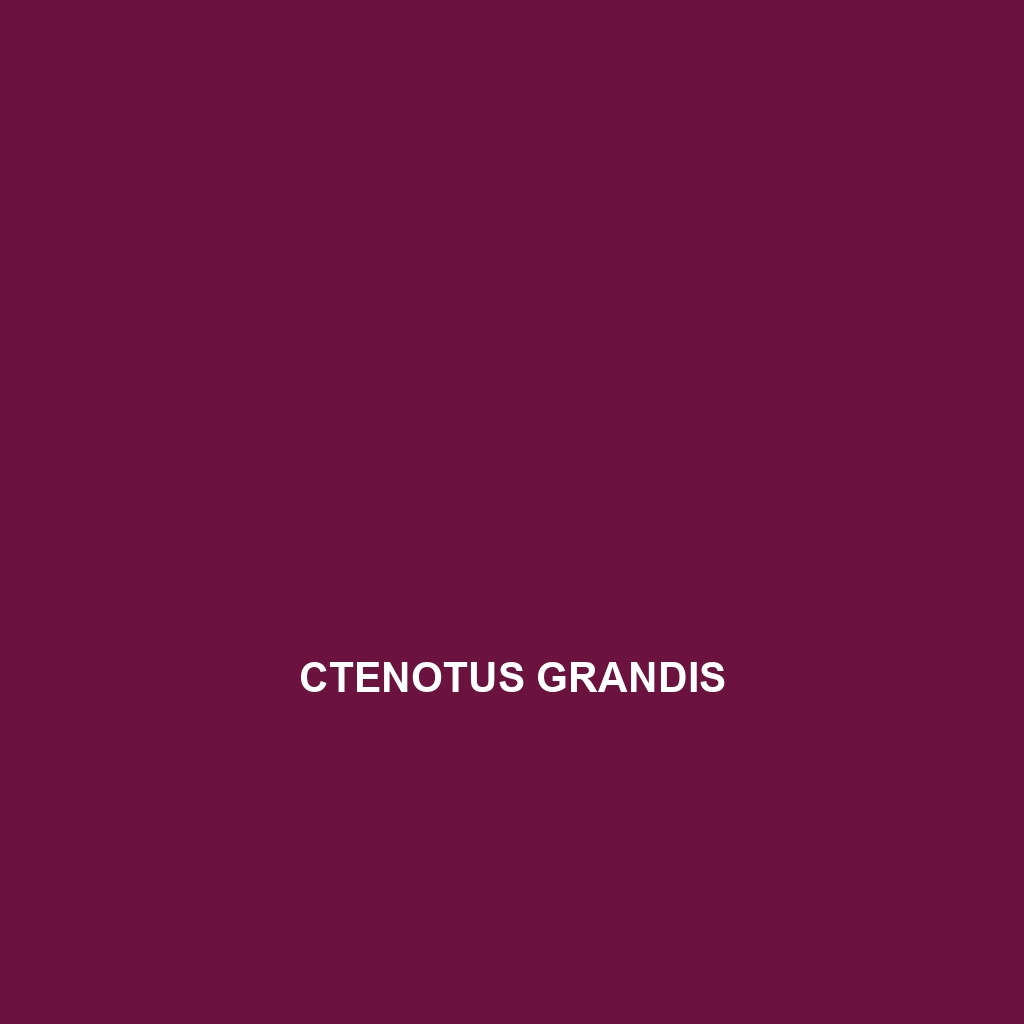Ctenotus lateralis, or the lateral skink, is a diurnal, insectivorous lizard found in the dry regions of southeastern Australia, measuring 10 to 15 cm in length and characterized by its elongated body and distinctive brown to gray coloration with darker stripes. As a vital part of its ecosystem, it helps control insect populations while showcasing remarkable tail regeneration abilities.
Tag: skink diet
Ctenotus leae
Ctenotus leae, commonly known as the Leaf Skink, is a slender, agile lizard native to Australia’s arid regions, characterized by its smooth scales, pale stripes, and a diet primarily consisting of small insects. This diurnal skink plays a crucial role in its ecosystem by controlling pest populations and serving as prey for larger predators.
Ctenotus joanae
Discover the Joanna's Ctenotus (Ctenotus joanae), a diurnal skink from central Australia known for its slender body, smooth scales, and distinctive coloration that aids in camouflage. Thriving in sandy soils and open habitats, this agile predator primarily feeds on small insects and plays a crucial role in its ecosystem.
Ctenotus iapetus
The Ctenotus iapetus, or Iapetus skink, is a slender, 10 to 15 cm long lizard native to arid regions of southwestern Australia, characterized by its smooth, shiny scales and distinctive coloration. This diurnal insectivore plays a crucial role in its ecosystem by controlling insect populations and serves as prey for larger predators.</p>
Ctenotus impar
Ctenotus impar is a medium-sized Australian skink, measuring 10 to 20 cm, known for its striking brown, gray, and black coloration that provides excellent camouflage. Primarily found in arid regions, this diurnal species burrows in sandy or loamy soils and feeds on insects, playing a vital role in its ecosystem.
Ctenotus greeri
Discover the Ctenotus greeri, a unique skink species native to the arid regions of Australia, characterized by its brown and grey coloration with distinctive stripes, measuring 10 to 15 cm in length. This diurnal insectivore thrives in sandy soils and grasslands, playing a crucial role in pest control and serving as prey for larger predators.
Ctenotus grandis
Discover the Ctenotus grandis, or great skink, a medium-sized reptile thriving in central Australia's arid regions, featuring distinctive greyish-brown coloration with dark stripes and an insectivorous diet that plays a vital role in maintaining ecological balance. Known for its impressive agility and burrowing behavior, this skink exhibits fascinating social interactions and reproduction patterns, making it a unique subject for herpetological studies.
Ctenotus gemmula
Discover the Ctenotus gemmula, a slender skink native to Australia's arid regions, boasting distinctive earthy coloration and agile movements. This diurnal reptile thrives in sandy habitats, primarily feeds on insects, and plays a crucial role in its ecosystem by maintaining insect population balance.
Ctenotus euclae
Discover the Eucla Ctenotus (Ctenotus euclae), a medium-sized skink native to southwestern Australia, known for its effective camouflage, diurnal behavior, and diet of insects and small invertebrates. With a slender body averaging 10 to 15 cm in length, this resilient species plays a crucial role in its ecosystem by controlling pest populations.
Ctenotus ehmanni
Ctenotus ehmanni, or Ehmann's Ctenotus, is a medium-sized skink found in Australia’s arid and semiarid regions, characterized by its slender body, distinctive dark stripes, and diurnal behavior. This agile predator primarily feeds on insects and plays a vital role in maintaining ecological balance within its habitat.







